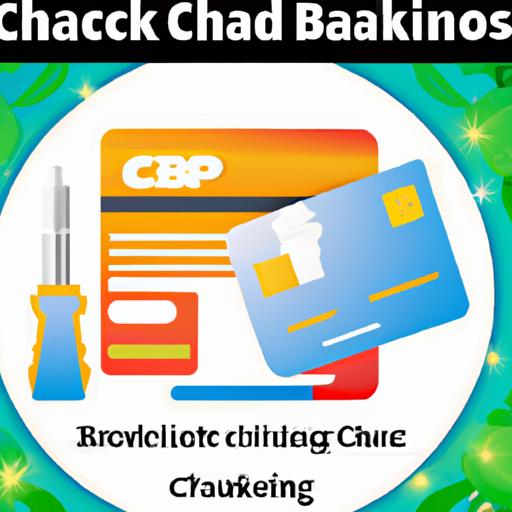Chargebacks in Credit Card Processing: A Detailed Guide
Chargebacks in Credit Card Processing: A Detailed Guide
Picture this: you swiped your card for those shiny new sneakers you’ve been eyeing, eagerly awaiting the moment they arrive at your doorstep. But hold up, what’s this? A chargeback? Your heart skips a beat as confusion takes over your once euphoric state. Fear not, dear reader! In this comprehensive guide, we’re diving headfirst into the wild world of chargebacks in credit card processing. It’s time to unravel the mysteries behind those fascinating, yet dreaded, little discrepancies that can turn your joyous shopping experience into a rollercoaster ride of emotions. So grab your favorite cup of joe, cozy up, and prepare to become a chargeback connoisseur, armed with knowledge to navigate this tricky terrain. Let the adventure begin!
Understanding Chargebacks: The Ins and Outs of Credit Card Processing Woes
Chargebacks can be a real headache for merchants who rely on credit card processing to run their businesses smoothly. These little hiccups in the payment process can result in frustration and lost revenue. But fear not! In this detailed guide, we will delve into the nitty-gritty of chargebacks and equip you with the knowledge you need to navigate the choppy waters of credit card processing.
First things first, what exactly is a chargeback? A chargeback occurs when a customer disputes a credit card transaction and asks their card issuer to reverse the charge. This can happen for a variety of reasons, such as fraud, dissatisfaction with the product or service, or even simple misunderstandings. When a chargeback is initiated, the funds are taken from the merchant’s account and temporarily returned to the customer’s card, pending investigation. This not only interrupts cash flow but can also result in additional fees for the merchant. To make matters worse, chargebacks can also damage the merchant’s reputation and may even lead to the termination of their merchant account. It’s crucial to understand the ins and outs of chargebacks to effectively manage and minimize their impact on your business. So, let’s dive right in and explore some key concepts and best practices for dealing with chargebacks. Here are some important things to keep in mind:
- Provide clear and detailed product descriptions to minimize misunderstandings and dissatisfaction.
- Respond promptly and professionally to customer inquiries and complaints to address any potential issues before they escalate to chargebacks.
- Use fraud prevention tools and techniques, such as address verification and card security codes, to protect yourself against fraudulent chargebacks.
- Keep meticulous records and documentation of all transactions and customer interactions to provide evidence in case of disputes.
- Understand your rights and responsibilities as a merchant, and be familiar with the chargeback process and regulations to effectively challenge invalid claims.
Remember, chargebacks are an inevitable part of credit card processing, but with the right knowledge and strategies, you can minimize their impact on your business. Stay tuned as we delve deeper into the world of chargebacks and equip you with valuable tips and tricks to navigate this challenging terrain!
Protecting Your Business: Expert Insights on Mitigating Chargebacks
When it comes to credit card processing, chargebacks can be a major headache for businesses. These unexpected refunds not only result in a loss of revenue, but they also have the potential to damage a company’s reputation. That’s why it’s crucial for businesses to have a solid understanding of chargebacks and to implement strategies to mitigate their impact.
So, how can you effectively protect your business from chargebacks? We reached out to a panel of industry experts who shared their insights and tips on how to stay one step ahead. Here are some key takeaways from our discussion:
- Monitor transactions and identify potential fraud: Regularly review your transactions to spot any suspicious activity. Look for common red flags such as unusually large orders, multiple transactions from different IP addresses, or purchases from countries known for high levels of fraud.
- Implement a robust fraud detection system: Investing in a reliable fraud detection system can help you identify and prevent fraudulent transactions before they result in chargebacks. Look for a system that uses advanced machine learning algorithms and real-time monitoring.
- Provide clear product descriptions and terms of service: Make sure your customers have a detailed understanding of what they are purchasing and the terms of the transaction. Clearly state your refund policy, delivery timeframes, and any other relevant information to minimize misunderstandings that could lead to chargebacks.
Furthermore, it’s important to have efficient and reliable customer support. Good communication and prompt resolutions can often prevent chargebacks from escalating. By following these expert insights, you can equip your business with the tools and knowledge to effectively mitigate chargebacks and protect your bottom line.
Mastering the Art of Dispute Resolution: Tips to Navigate Credit Card Chargebacks
Discover how to navigate through the often tricky world of credit card chargebacks with these indispensable tips. Whether you’re a small business owner or a consumer, understanding the ins and outs of dispute resolution can save you time, money, and unnecessary stress. So, buckle up and get ready to become a master in resolving chargebacks!
<p><b>1. Pay Attention to Timelines:</b> Time is of the essence when it comes to chargebacks. Make sure to familiarize yourself with the specific time limits for responding to chargeback requests. This will help you avoid forfeiting your right to dispute the transaction.</p>
<p><b>2. Collect Solid Evidence:</b> When faced with a chargeback, gather any available evidence to support your case. This can include email correspondences, receipts, or even screenshots of completed transactions. The stronger your evidence, the higher the chances of winning the dispute in your favor.</p>
<p><b>3. Communicate Effectively:</b> Open communication is key in resolving chargebacks. Reach out to the customer or the merchant promptly to understand the reason behind the dispute. A polite and understanding approach can often lead to an amicable resolution, avoiding unnecessary escalations.</p>
<table class="wp-table">
<caption><b>Bonus Tip: Do's and Don'ts</b></caption>
<tr>
<th>Do</th>
<th>Don't</th>
</tr>
<tr>
<td>Do respond to chargeback requests within the specified timeframe.</td>
<td>Don't ignore chargebacks and let them go unresolved.</td>
</tr>
<tr>
<td>Do maintain meticulous records of all transactions and related documents.</td>
<td>Don't argue aggressively or disrespectfully with the customer or the merchant.</td>
</tr>
<tr>
<td>Do follow up diligently to ensure the chargeback is appropriately resolved.</td>
<td>Don't rely solely on verbal agreements or promises.</td>
</tr>
</table>
<p>By following these tips, you'll be well-equipped to handle credit card chargebacks like a pro. Remember, staying informed, providing evidence, and maintaining open lines of communication are key to successfully navigating the dispute resolution process. So, the next time a chargeback comes knocking on your door, you'll know exactly how to handle it!</p>
Navigating the Complex World of Chargeback Rules: Key Recommendations for Businesses
Chargebacks can be a nightmare for businesses, causing financial loss and headaches for merchants. With complex rules and regulations surrounding chargebacks, it’s essential for businesses to have a comprehensive understanding of how to navigate this challenging landscape. To help you make the most of your credit card processing and protect your business, here are some key recommendations:
-
Understand the Chargeback Process: Familiarize yourself with the different stages of a chargeback, from the initial dispute to the final resolution. This will help you identify potential vulnerabilities and take proactive steps to prevent chargebacks.
-
Implement Robust Fraud Prevention Measures: One of the most effective ways to avoid chargebacks is by implementing robust fraud prevention measures. Utilize technologies such as address verification system (AVS), CVV verification, and IP geolocation to verify the authenticity of transactions and minimize the risk of fraudulent chargebacks.
-
Provide Clear Product Descriptions: Ensure your product descriptions are accurate, detailed, and honest. Ambiguous or misleading descriptions can lead to customer dissatisfaction and chargebacks. Make sure your customers know exactly what they are purchasing to minimize the chance of disputes.
-
Offer Reliable Customer Support: Prompt and reliable customer support can go a long way in preventing chargebacks. Make it easy for customers to contact you and provide a quick resolution to any issues or concerns they may have. By offering exceptional customer service, you can address customer disputes before they escalate to chargebacks.
-
Regularly Monitor your Chargeback Ratio: Keep a close eye on your chargeback ratio, which is the percentage of chargebacks compared to total transactions. Aim to keep your ratio below the industry threshold, as exceeding it can result in costly penalties or even the termination of your merchant account.
By following these key recommendations, you can navigate the complex world of chargeback rules and protect your business from financial loss and reputational damage. Stay vigilant, implement the necessary fraud prevention measures, and provide exceptional customer support to minimize the risk of chargebacks. Remember, prevention is always better than cure when it comes to chargebacks!
Future Outlook
Well, folks, we’ve reached the end of our journey through the electrifying world of chargebacks in credit card processing! I hope this detailed guide has shed some light on this often-confusing topic and left you feeling as charged up as we are.
Remember, chargebacks can be a formidable opponent for businesses, but armed with knowledge and a solid strategy, you can turn them into your own personal superheroes. So, dig deep, put on your cape (or maybe just a snazzy blazer), and face those chargebacks head-on!
Whether you’re a business owner, a credit card guru, or just a curious soul hungry for knowledge, we hope this guide has provided you with the clarity and confidence to navigate the complex world of chargebacks. After all, it’s no longer just a buzzword whispered in the shadows of the credit card realm; it’s an essential part of this financial landscape.
So go forth, intrepid reader, and spread the word about chargebacks in credit card processing. Educate your friends, coworkers, and anyone who will listen. And next time you swipe that shiny piece of plastic, remember the power you hold in your hands, the power to challenge and reverse a transaction with the mighty chargeback.
Chargebacks, my friends, they’re not just a necessity, they’re a force to be reckoned with. And armed with this detailed guide, you’ll be ready to face them with confidence and finesse. So, until we meet again, may your chargebacks be few and victories abundant. Keep swiping, keep charging, and keep on hustling!
And remember, when life throws you chargebacks, just flip the script and write your own ending!






